Every great website needs a snappy, memorable domain name. Coming up with something new is a serious challenge, but once inspiration strikes, you'll need to register that name with a domain name registrar before you can use it online.
Registration isn't difficult, but first you must choose from the hundreds of companies competing for your business, and there are several things for you to consider before signing the virtual dotted line.
We’ve also rounded up the best overall web hosting services How to choose the perfect domain registrar Pricing structures can be complicated. A low headline figure could become expensive on renewal, for instance. Prices vary between domain extensions, too, so a registrar that offers great value for a .com domain might give you a poor deal on when it comes to .org.There may be extra costs for tasks like transferring your domain to another registrar, too. Read the small print before you sign up.Look for any bundled or optional extras. A Whois privacy service prevents your address, phone number and email address appearing as public contact details for the domain, something which could otherwise get you a significant amount of spam email and phone calls. We've seen this cost as much as $11.20 a year, but several registrars provide it for free.Many domain registrars offer hosting as an extra, but keep in mind that web hosting companies can also register domains. If you have an idea of which web host you'd like to use, check the details of its plans: you may be able to register a domain for free when you buy hosting, and that's often the cheapest option.Finally, take a look at the support a registrar offers. You may never need any help at all, but if anything critical crops up – maybe an issue which might cause a problem with renewal – it's important that your provider is on hand to ably assist. Balancing all these priorities can be tricky, so that's why we've created this list of top domain registrars to help point you in the right direction.

With a name like Domain.com, the EIG-owned brand, means business, focusing primarily on small and medium businesses. It offers most popular top level domains and over 25 country code top level domains and also sells premium domains as a broker.
With nearly two decades of online presence, the company - which is one of the world’s biggest domain name registrars - expanded in web hosting and now ranges a number of products including a website builder, a full design service and web hosting.
Domain.com prices tend to be average but we have managed to blag a 25% discount off almost everything in your cart*. Non-premium TLD (.Club, .Me, .Website etc) start from $2.99 for the first year ($2.24 with our code). In line with the rest of the industry, they rise significantly after the second year).
You need to pay for privacy protection, a reasonable $8.99, plus you can add email, web hosting, SSL certificates and malware protection, none of which is compulsory. You can stick with its basic website builder which is free with every domain: you get a drag and drop website builder, tons of mobile-friendly templates, up to six pages, SEO tools, Paypal integration and even access to stock image library.
Support is more than adequate with 24/7 chat, email and phone support. Domain.com may not have the cheapest prices but it provides with a very balanced offering.
*All renewals after the initial discounted period will be charged at the then current standard list price for the selected period. Coupon is not valid with sunrise registrations, landrush registrations, EAP registrations, pre-registrations, premium registrations, renewals, transfers, custom website design, other coupons, or special pricing.

Web giant GoDaddy is the world's biggest domain registrar, currently managing more than 75 million domains for 17 million customers around the globe.
The company is well-known for its low headline prices, and it's the same story here, with .uk and .co.uk domains available for $0.99 in year one. On the other hand .com and .org are less impressive (though still apparently cheap) starting at $12.17. Beware, though: these aren't the bargains they initially seem.
The first catch is that GoDaddy's starting prices only apply if you pay for two years upfront, and the second year is significantly more expensive (.com rises to $18.17, .uk and .co.uk domains rise to $12, .org and .mobi are ridiculously high, $21.17 for .org and $26.17 for .mobi - at the moment, first year for .mobi is $7.17, due to an offer).
The second problem is that there are no bundled extras, so adding something like Whois privacy – a valuable service often included for free with other providers – costs $8 a month for year one, and $10 on renewal.
There's clearly much better value to be had elsewhere, but GoDaddy may still appeal to web beginners looking for a bundled hosting and domain registration deal. The company has an array of products covering every possible requirement, with telephone support if you need it, and buying your domain and hosting from the same provider will make life a little easier.
Just keep in mind that other providers can also combine hosting and domain registration, and GoDaddy may not provide the best package for you. Check out our various hosting guides for possible alternatives.
You can sign up for GoDaddy domain registration here
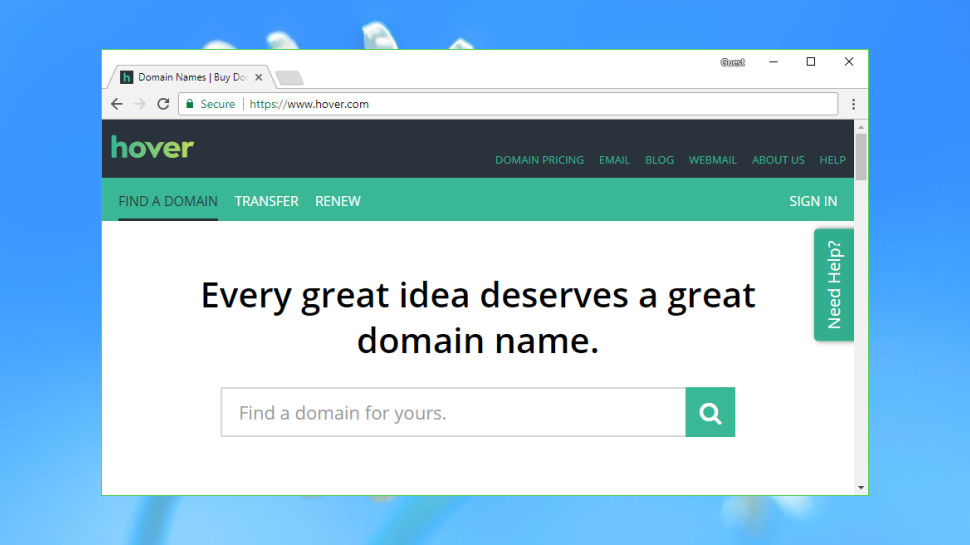
Hover is a popular domain name registrar owned by Tucows, which also operates eNom and the domain reselling platform OpenSRS.
Hover's website is clear and straightforward. A domain pricing page allows for checking registration costs before you start, or you can use the search box to immediately locate your preferred TLD (top-level domain).
By default the results page displays every domain you can register and their prices, giving you a lot to scroll through and read. But a handy sidebar allows filtering domains by categories including Personal, Businesses, Audio and Video, Food and Drink, and more. It's a neat touch which could help you spot an appealing domain that you otherwise might have missed.
Prices are very reasonable, with .com domains costing $12.99 for year one, .co.uk priced at $10.99, .org costing $13.99 and .mobi reaching $15.99. Shop around and you'll find slightly lower prices elsewhere, but Hover generally provides good value.
There's a welcome bonus in Whois Privacy, which comes free for as long as the domain is managed by Hover.
The company keeps upselling to a minimum, even in the final shopping cart stage. You're simply offered three email-related extras: email forwarding at $5 a year, a 10GB email account for $20, or you can opt for a 1TB inbox, file sharing, a calendar and more, for an annual $29.
If you have any questions, support is available via email and chat, although it's not 24/7. Working hours are 8am to 8pm (Eastern Time) Monday to Friday, and 12pm to 5pm at the weekend.
You can sign up for Hover domain registration here
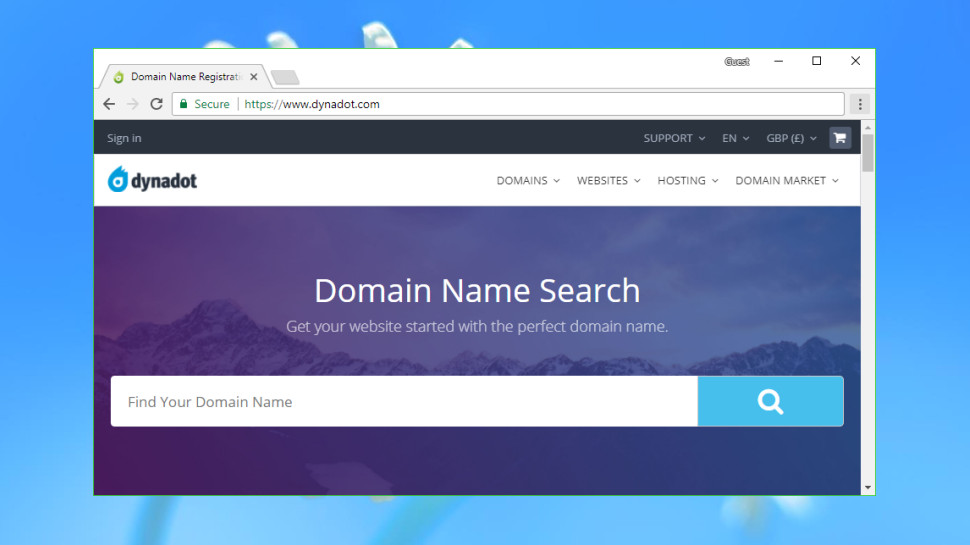
Most domain name registrars offer a simple identikit service with little to separate them from the competition, but Dynadot is an interesting exception which has some unusual advantages.
This starts right at the beginning, with your initial search. You can use the website much like any other – type your preferred domain, press Enter, read the results – but you also get Bulk and IDN (Internationalized Domain Name) search tools, and advanced options allow defining which domain extensions to include in your searches, as well as setting those as defaults for all future searches.
These searches can optionally return results from domain auctions, Dynadot's Marketplace (where other customers sell domains they no longer need) and other sources. There's also a Backorder option to try and grab a domain that isn't currently available, if it's not renewed.
Prices are on the low side, with Dynadot offering both special deals on some extensions and good value at renewal. .com sites are $7.99 initially, $8.99 on renewal. If you’re after a .co.uk domain, that’ll set you back $6.95, with .org costing $10.99, and .mobi domains are $4.25 initially, $13.99 on renewal.
That's just the start: Dynadot also piles on the free extras. A Website Builder allows you to build and host a simple one-page responsive website. There's free domain forwarding if you'd like to redirect visitors somewhere else. DNS support allows creating 50 subdomain records, 10 email addresses, and 5 each of MX and TXT records. There's even a Grace Deletion list which allows returning a domain if you change your mind.
This requires a small fee and won't always be allowed (the details on how it works are here), but it's still a welcome extra you'll rarely find with other registrars.
Dynadot's support wasn't always as impressive, with live chat being offline when we checked. But the website does have a publicly available forum, allowing anyone to browse common questions and see how happy (or otherwise) Dynadot's customers might be.
You can sign up for Dynadot domain registration here
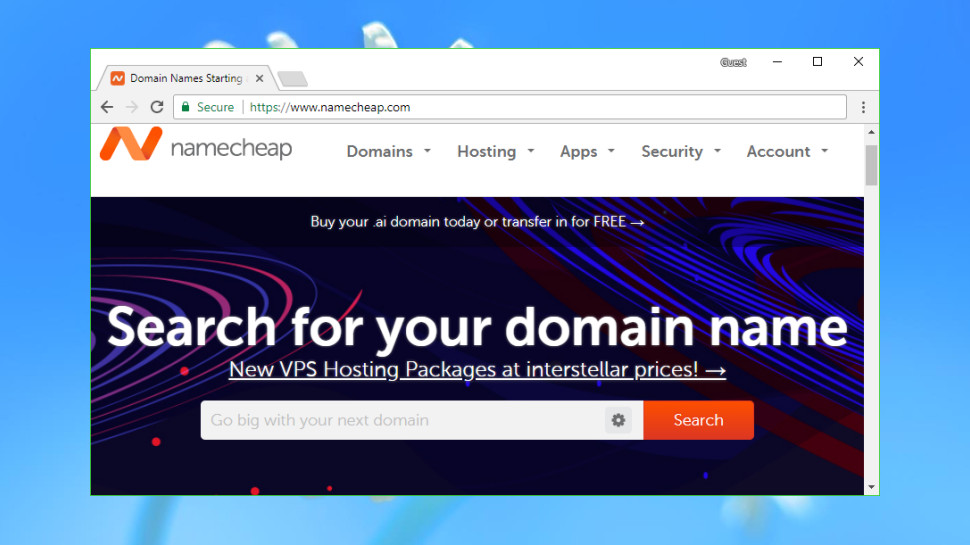
Founded in 2000, Namecheap is a popular domain name registrar and web host which now manages more than five million domains.
Namecheap's excellent website allows searching for individual domains, or in batches of up to 50.
If the domain is taken, you can view the Whois record or offer to buy the domain (via DomainAgents) from the current user.
If the domain is available, results are displayed across four tabs: Popular, New, Discounted and International. This is a neat approach which makes it easier to browse the list and find what you need.
Prices are generally very good at $8.88 (£6.8) for .com domains - $12.98 on renewal, $7.58(£5.8) for .co.uk - $9.58 on renewal, $12.98 (£10) for .org - $14.98 on renewal, and $16.88 (£13) for .mobi (at the moment, you can get .mobi for $2.88 for the first year). There are some special deals available, and Namecheap has an Agent 88 set of domains which are almost always available at $0.48 (£0.35) for the first year (these usually include the following: .site .website .space .pw .press .host .tech .online and .fun – but there may be others as well).
That would be good value all on its own, but Namecheap doesn’t stop there: you get WhoisGuard domain privacy thrown in for free.
Namecheap's billing is straightforward and honest, with current and renewal prices clearly described in your Namecheap shopping cart, and Auto-Renew turned off. But if there's something you don't understand, helpful FAQ pages and live chat are just a click or two away.
You can sign up for Namecheap domain registration here
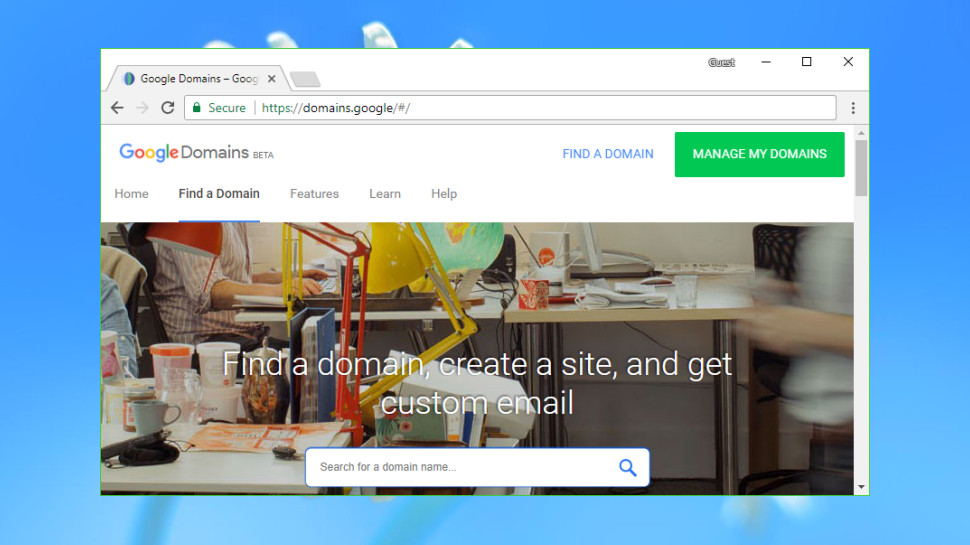
Shopping around for a domain registrar can involve a lot of hassle as you research companies you've never heard of, try to separate genuine bargains from marketing tricks, and browse the small print looking for hidden catches. With potential savings only amounting to a few pounds or dollars a year, at best, you might prefer to simply sign up with a big-name provider that you know will give you a reasonable service, even if it does cost a fraction more.
Enter Google Domains, Google's lightweight domain registration arm, a straightforward provider that puts speed and simplicity at the top of its priority list.
Google Domains doesn't confuse you with endless sales, or 'special' deals that turn out to be not so special after all. Upselling is kept to a minimum. Instead, it's all about making the purchase process as easy as any other online shopping site: search, click, and check out.
The difference is obvious from the moment you reach the site. There are no animated ads at the top of the page, no 'Sale!' banners, no low headline prices: just a search box where you enter a single domain.
The results page is equally straightforward, with prices listed for nine common top-level domains, and an All Endings tab listing every option in alphabetical order (domain.academy, domain.bargains, domain.camera).
One potential problem is that Google Domains doesn't support all the domain extensions you'll get elsewhere, and this includes some quite common examples (.mobi, .tv). If you think you might ever want to buy something beyond the most popular extensions, it’s a good idea to check that your likely choices are available before you buy.
Prices are standardized to whole numbers, so for example .com, .co.uk and .org domains are all priced at $12. That's a little above average overall, but better than some, especially as Google Domains throws in free Whois privacy for as long as you're registered. That's a valuable extra which could cost $2.80 to $11.20 a year elsewhere.
If you do have any questions, a Help link displays articles on common problems. If that's not enough, the Contact Us page enables talking to a support agent by email, live chat or telephone (Google calls you), the highest level of domain registrar support we've seen anywhere.
You can sign up for Google Domains domain registration here Check out the best website hosting services
Read more: techradar.com
Posted by willcritchlow
There’s a lot of material out there, on this site and others, about the importance of link-building. Normally, its effectiveness is either taken for granted or viewed as implied by ranking factor studies — the latter of which doesn't necessarily show that correlated factors actually drive performance. The real picture is one in which links clearly remain important, but where their role is nuanced.
For a while now, I’ve wanted to dig a little deeper into an individual link-building campaign that takes place over a relatively short period of time. I wanted to see what results (besides just link-based metrics) could be attributed to it.
In this post, I will try to pin down the effects that came from the campaign and show that yes, getting a bunch of links from the success of some highly visible “big content’ can drive improved rankings
The reason you don’t see more posts like this one is noisy data — so much goes on with a website’s performance that it can be difficult to draw a hard and fast connection between a campaign and its results for a business’s bottom line. This is especially true for link-building, for three reasons:
Websites are naturally accruing links anyway — both the target of the campaign and their competitors To some extent, we anticipate a domain-wide effect, which will as such be proportionately small and hard to pin down vs. noise from the algorithm and competitor activity Links do not have such a step-change impact as technical fixes or creation of new landing pages
However, at Distilled we recently had an opportunity with a particularly strong piece on a niche site to analyze a situation where the impact of our work ought to be more clearly visible among the broader noise. Take a look at these graphs, which show the linking-root domain acquisition of a client of ours over the last two years, as measured by Majestic and Ahrefs respectively:



See what I mean about noise? And I’m saying this is an unusually clear cut case. We actually built nine creative pieces, with link acquisition as one of the goals, for this client, over a two-year period. We’ve talked before about the campaign as a whole, here. There’s one that stands out in both graphs, though which is the one that launched in March 2018.
This gives us a rare, valuable opportunity to see which other metrics, which might have more direct business value, had noticeable changes around that time.
What might we expect to happen?
The theory is simple: Links remain part of Google’s algorithm, and so more links to a site mean better rankings. However, the reality is more complex — in our experience, creative pieces as link-building assets tend to result in two types of links:
Links to the creative piece, which in turn links, typically, to the site’s homepage Links directly to the homepage of the client site — e.g. “Research by client (client.com) indicates that…”
The interesting thing here is that for many sites, the homepage is not a core landing page. I’ve written before about how it’s almost impossible to have a good mental model for internal link equity flow, which makes the actual impact of the piece on core pages almost certainly not zero, but otherwise hard to predict. On the same subject, I’d also recommend this video by Dixon Jones at Majestic.
In a similar vein, we also know that the complexities of PageRank are themselves only a part of the unknowable complexities of Google’s ranking algorithm, meaning we can’t guarantee that adding links always moves the needle. I recently recorded this Whiteboard Friday where I mention some recent research by my colleague Tom Capper, which shows how unpredictable these effects can be.
The particular client example I’ve been referring to in this post had two things going for it which, again, brought unusual clarity to these effects:
The homepage was, in fact, a core ranking URL It was struggling to make its way onto page 1 for many reasonable target terms
Both of these ought to make it an ideal candidate for clearcut benefits from high-quality link building. (This isn’t to say link-building cannot work if these criteria are not met — just that the results will be harder to analyze!)
1st order results
Precisely because of the difficulty in analysis mentioned above, we find clients normally prefer to assess the performance of link-building campaigns in terms of 1st order benefits — by which I mean the performance of the actual creative piece, rather than their commercial landing pages.
The particular piece that stands out in those link acquisition graphs above earned the following 1st order benefits (and I’ve included graphs from our internal tracking platform so you can get a feel for the pace of acquisition):
228 LRDs peak (204 “fresh” index shown below), of which ~145 within a month of launch:

2,140 Facebook shares at the peak, of which ~1,750 within a month of launch:

82,584 landings in Google Analytics, of which ~67,000 within a month of launch:

I mentioned above that not all links tend to be directed at the piece itself, with journalists instead often referencing the homepage. 145 (domain-unique) links were directed at this piece by mid-April, but you’ll notice that March beat an average month by ~200 LRDs, and April also outperformed by ~100. By my back-of-the-envelope maths, you might want to claim as many as 300 LRDs driven to the whole domain by this piece, but your opinion may differ!
Showing the ways it worked
Right, I did say I’d link this at least to rankings, didn’t I?
Remember: This was part of a campaign of 9 pieces, and it launched mid-March, with most 1st order metrics, or leading indicators, coming through within a month (and no major technical changes around this time). There is some signal in among the noise here. Check out this graph, showing the number of keywords ranked for, according to Ahrefs:

Notice that change in gradient after the launch? (And, for the cynics among you, the piece itself only ranks for 20 keywords itself according to this same data source — that wasn’t a primary goal with this content).
Here are the rankings for the client’s (fairly ambitious!) target keywords:

I’d particularly draw your attention to the movement from the “11–20” to “4–10” group, which is consistent with the research by my colleague Tom Capper that I mentioned above. (Sidenote: it was nice to see the client’s Domain Authority increase relative to their competitive set in the recent update. The improvements to DA, aimed at making it better at predicting ranking ability, appear to have worked in this sample-size-one case!).
You can see this pattern more clearly in this graph, which we presented to the client when the campaign concluded late last year:

This effect is surprisingly clear-cut, but it might well be that to continue moving up the SERP, from positions 4–10 to positions 1–3, a very different type of work is needed — perhaps one emphasizing brand, or intent matching.
How can I do this for my site/client?
Here are some useful resources to help when starting on your creative campaigns:
Mark - How to make sticky content
Hannah - What is content strategy
Leonie - How to make award winning creative content - Part 1
Leonie - How to make award winning creative content - Part 2
Conclusion: Big content for links can work
As I mentioned above, it’s surprisingly unusual to see such a clear and obvious case of link-building work moving rankings in a lasting way. This has certain similarities with other such cases we’ve seen in recent years, though:
The site started fairly small (if nothing else, this makes the signal bigger relative to the noise) It had target terms that were on the cusp of first-page rankings Some search competitors had far stronger domains
The reports that “links are dead” have, apparently, been greatly exaggerated — instead, it’s just that the picture has gotten more complex.
Obviously Distilled clients are only a finite sample, however, so I’d love to hear your experiences of successful link-building, and, crucially, the kind of situations in which they moved rankings, in the comments below!
Sign up for The Moz Top 10, a semimonthly mailer updating you on the top ten hottest pieces of SEO news, tips, and rad links uncovered by the Moz team. Think of it as your exclusive digest of stuff you don't have time to hunt down but want to read!
Read more: moz.com
At it's heart SEO (Search Engine Optimization) developed as an extension to web accessibility by following HTML 4 guidelines, in order to better identify the purpose and content of a document.
This meant ensuring that web pages had unique page titles that properly reflected their content, as well as keyword headings to be better highlight the content of individual pages, and that other tags were treated the same accordingly.
This was necessary, not least because web developers were often only focused on whether their coding worked, rather than the user experience, let alone following web publishing guidelines.
This slowly changed as it became increasingly known that search engines used these "on-page" signals to provide their "Search Engine Results Pages" (SERPs) - and that there was an advantage to ranking higher on these to tap into free and natural organic traffic.
The internet has evolved a lot since those early days, and major search engines such as Google now process far more "off page" information when determining their search results, not least by using semantic processing, collating user data, and applying neural networks for the machine learning of patterns, trends, and personal preferences.
Even still, the core ideals of SEO remain the same as they always have - that of ensuring pages have the correct tags for targeting keywords, not just for natural search results, but also for PPC (Pay Per Click) and other marketing campaigns, where call-to-action (CTA) and conversion rates are essential indicators of success.
But how does a business know which keywords to target on its sales pages? How does a website filter transactional traffic from general site visitors? And how can that business increase its ability to capture targeted traffic from across the internet? Here we list a number of tools that will help do exactly that.
We've also highlighted the best free SEO tools of 2019

Image credit: Google
Google Webmaster Tools (GWT) is an excellent way for newbie webmasters to get started with SEO. The arsenal of tools includes 'Fetch as Goole', which allows you to view URL's in the same way as Google does. This is a very simple way to detect and troubleshoot poor Search Engine Optimization. You can then modify your page accordingly and even review code to make sure your site has not been hacked.
'PageSpeed Insights' permits you to perform speed checks on desktop and mobile versions of your site. As mobile traffic now consumes a hefty portion of web traffic overall, this is crucial for ensuring mobile visitors access and remain on your pages.
The 'structured data testing tool' is also useful for checking data has been inputted correctly, performing validation routines to check it's in the right format.
Google also very generously offers a free chat with a personal representative via Hangouts. You can make use of this feature during regular office hours for assistance with site issues such as mastering the various tools and detecting malicious activity. Further help is available visit the GWT forum. This is a place for Webmaster's to connect and share troubleshooting and performance tips.
GWT has received the universal praise online with the only criticism being a slight delay between when data is posted and when it is reported.
You can sign up for Google Webmaster Tools here
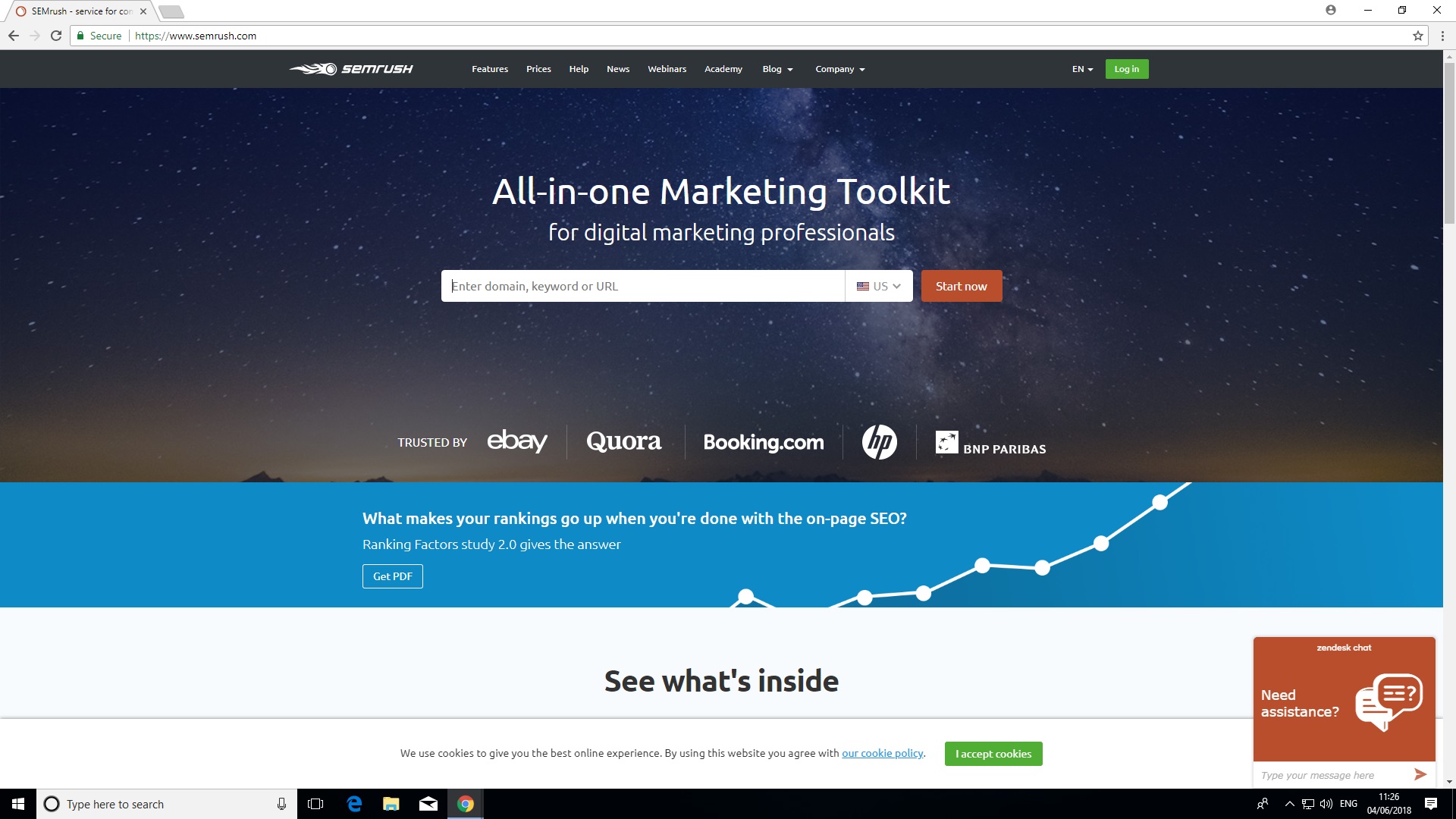
Image credit: SEMrush
SEMrush SEO tools was originally developed in 2008 by SEMrush. In 2018, the project received funding of $40 million for expansion.
The keyword research tool is accessible from SEMrush's super elaborate dashboard. You can view detailed keyword analysis reports as well as a summary of any domains you manage.
More crucially, the SEO toolkit allows you to compare the performance of your pages to see how you rank against the competition. For instance, you can analyze backlinks from other websites to yours. (this process is sometimes as 'link building').
Traffic analytics helps to identify your competitors' principle sources of web traffics, such as the top referring sites. This enables you to drill down to the fine details of how both your and your competitors' sites measure up in terms of average session duration and bounce rates. For those new to SEO slang 'bounce rates' are the percentage of visitors who visit a website then leave without accessing any other pages on the same site.
The domain overview does much more than provide a summation of your competitors' SEO strategies. You can also detect specific keywords they've targeted as well as access the relative performance of your domains on both desktop and mobile devices.
SEMrush has received many positive mentions online but has been critiqued for use of SEO jargon such as 'SERP' which may alienate inexperienced users. A 'Pro' subscription costs $99.95 (£74.52) per month which includes access to all SEO tools.
You can sign up for SEMrush SEO toolkit here

Image credit: Screaming Frog
SEO Spider was originally created in 2010 by the euphemistically named "Screaming Frog". This rowdy reptile's clients include major players like Disney, Shazam and Dell.
One of the most attractive feature of SEO Spider is its ability to perform a quick search of friendly URL's. SEO best practices dictate that search engines are much more likely to index simple, relevant and human readable URL's over addresses which are a meaningless string of characters, so this feature is a major bonus.
SEO Spider can also crawl your site to check for broken pages. This saves you the trouble of manually clicking each link to rule out '404 errors'.
The tool also allows you to check for pages with missing title tags, duplicated meta tags, tags of the wrong length and any other features which are not in line with the very best SEO practices.
SEO Spider also checks the number of links placed on each page to avoid the poor SEO practice of posting too many on one page. This usually confuses visitors to your site, causing them to go elsewhere and Google also ranks down pages with over 100 'outlinks'.
There is both a free and paid version of SEO Spider. The free version contains most basic features such as crawling redirects but this is limited to 500 URLs. You also can not customize robots.txt and there's no google analytics integration. This makes the 'Lite' version of SEO Spider suitable only for smaller domains. The paid version $180 (£149) per year and includes more advanced features as well as free tech support.
You can sign up for SEO Spider here
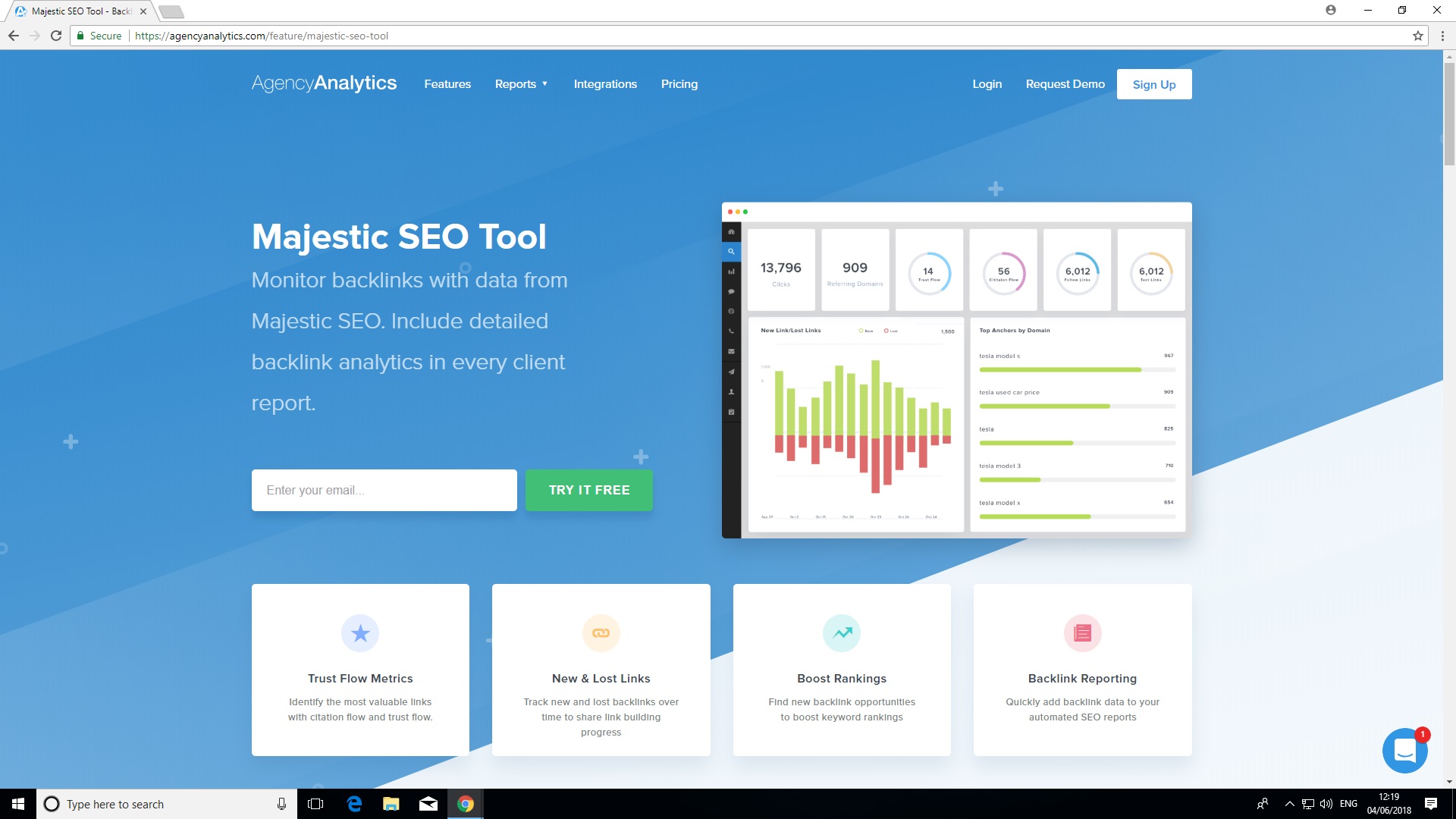
Image credit: Majestic SEO Tools
Majestic has consistently received praise from SEO veterans since its inception in 2011. This also makes it one of the oldest SEO tools available today.
The tools main focus is on backlinks, which represent links between one website and another. This has a significant influence on SEO performance and as such, Majestic has a huge amount of backlink data.
Users can search both a 'Fresh Index' which is crawled and updated throughout the day, in addition to an 'Historic Index' which has been praised online for its lightning retrieval speed. One of the most popular features is the 'Majestic Million' which displays a ranking of the top 1 million websites.
The 'Lite' version of Majestic costs $50 (£39.99) per month and incorporates useful features such as a bulk backlink checker, a record of referring domains, IP's and subnets as well as Majestic's integrated 'Site Explorer'. This feature which is designed to give you an overview of your online store has received some negative comments due to looking a little dated. Majestic also has no Google Analytics integration.
You can sign up for Majestic SEO Tools here
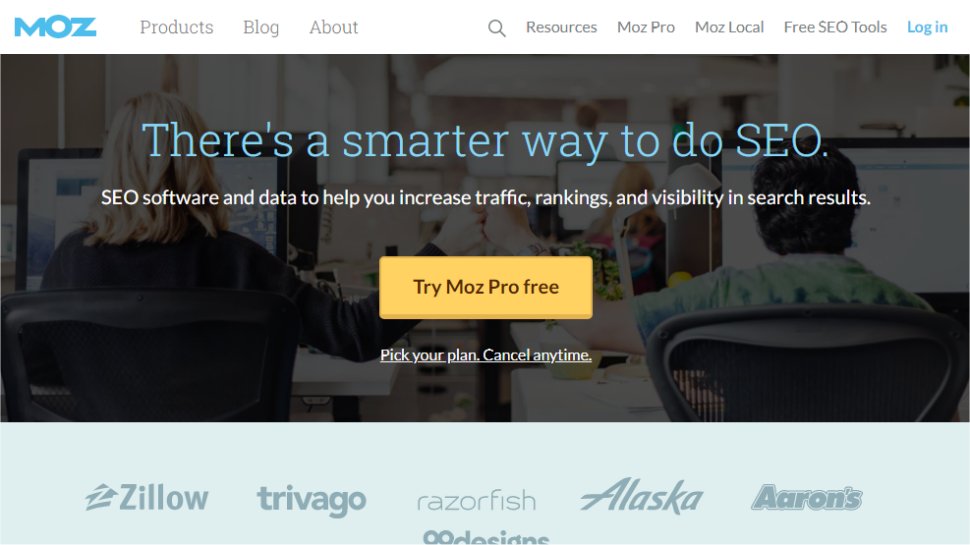
Image Credit: Moz Pro
Moz.com is a platform of SEO tools that aim to help you increase traffic, rankings, and visibility across search engine results.
Key tools include the ability to audit your own site using the Moz pro spider, which should highlight potential issues and recommend actionable insights. There's also the ability to track your site rankings over hundreds or even thousands of keywords per website.
There's also a keyword research tool to help determine which keywords and keyword combinations may be the best for targeting, and there's also a backlink analysis tool which mixes a combination of metrics including anchor text in links as well as estimated domain authority.
Pricing for Moz Pro begins at $99 (£80) per month for the Standard plan which covers the basic tools. The Medium plan offers a wider range of features for $179 (£150) per month and a free trial is available. Note that plans come with a 20% discount if paid for annually. Additional plans are available for agency and enterprise needs, and there are additional paid-for tools for local listings and STAT data analysis.
Even if you don't sign up to Moz Pro, a number of free tools are available. There's also a huge supporting community ready to offer help, advice, and guidance across the breadth of search marketing issues.
You can sign up to Moz Pro here
Read more: techradar.com